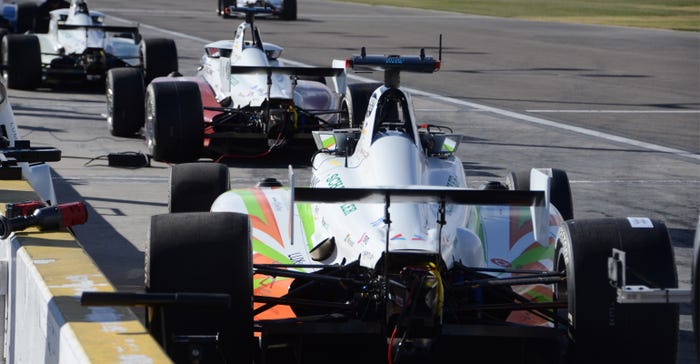February 3, 2022

A trip to Las Vegas to CES included a 24-mile drive north of the Las Vegas Strip to visit the Las Vegas Motor Speedway ahead of the big show. The reason? It was a chance to view competitors taking part in the Indy Autonomous Challenge.
Farm Progress wrote about that challenge in 2021, when the idea was launched. And despite the pandemic, nine teams took place in the speed challenge at the legendary Brickyard in Indianapolis in October 2021. The key was speed, and the TUM (Technische Universitat Munchen) earned $1 million by hitting 157 mph to win the initial challenge. The fastest lap was 139 mph, and the fastest two-lap average was 136 mph. Later in the year, the PoliMove (for Politecnico of Milan, Italy) team set a new land speed record for an autonomous car at 175.96 mph.

It's an interesting exercise, and the program sent out invitations, netting 41 universities that signed up to compete. In the end, it winnowed the field down to 10 teams representing 23 universities and partners. But the challenge wasn't over.
Nine teams made the trip to Las Vegas, and this time, the goal was different. "This time it's not about speed; it's about passing," says Paul Mitchell, CEO, Energy Systems Network, organizer of the challenge.
Seeing cars in action
That trip out of the Strip is an eye-opener when a visitor arrives at the track to find cars, engineers and programmers poring over their vehicles. Then — without a driver — the car leaves the pit area and heads around the track.
As one grad student explains, the cars use ROS 2.0, which is short for "robot operating system," as a baseline program. From that, the routing and controls are programmed by each team. The cars, engines, sensors and base code are the same, but each team can innovate the code as they see necessary.
The challenge many faced is that harsh conditions — and operating above 100 mph can be harsh — have more impact on physical parts than the programming. Harnesses, sensors and vision systems that become unhooked don't work so well.

These are complex machines, and while a series of left turns around an oval may seem like easy programming, it isn't. Add in that the passing challenge — worth $150,000 to the winning team — complicates operation even more.
A walk around the pits and chatting with programmers was an eye-opener. Farm Progress gravitated to the team with an Auburn University logo on the side of the car, where we watched the teams work on programming and the cars. Where a driver would sit rests the brains of the car. The space in an Indy car is tight, so cramming in computer systems didn't make the space look roomier.
Farm Progress was unable to attend the "passing challenge," but the PoliMove team that set the speed record in 2021, walked away with the $150,000 prize in the Vegas competition. And the TUM team came in second for $50,000.
"This program started with the DARPA autonomous vehicle challenge," Mitchell says. DARPA is the Defense Advanced Research Projects Agency, promoting advanced tech that could be leveraged by the military.
That vehicle challenge wasn't about speed, but about autonomy across a specific course in a specific time. The challenge builds on the awareness systems of DARPA and others. The cars use Lidar, a sensing method that uses pulses of laser light, to look ahead for objects. While the system in use is good for up to 200-feet, we learned it's better at 40 to 80 feet, given that the course turns. The system offers visual data for running the course.
Autonomy and farming
Why might a farmer be interested in a driverless race car? Not for the future of competition, but these systems working at this speed help validate the programming and provide confidence that autonomous vehicles — on road or off — will perform as designed.

Mitchell notes that one surprise he got out of the program is the level of cooperation between teams during development. "Sure they're competing, but they're also working to share ideas and solve problems," he says.
You can learn more, and watch those cars passing at speed by visiting indyautonomouschallenge.com.
About the Author(s)
You May Also Like






